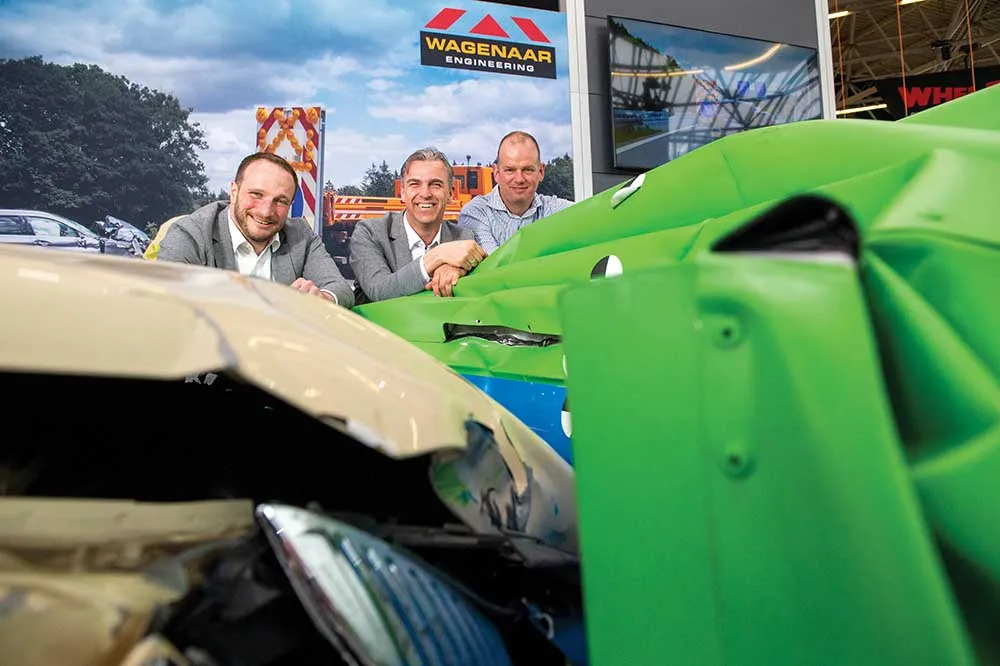The world's first pedestrian airbag fitted as standard on the all-new Volvo V40 is the next step which the company says will go some way to help further reduce the number of fatalities involving pedestrians, currently 14 per cent in Europe and 25 per cent in China. It was in 2008 that Volvo announced a unique goal in stating that ‘By 2020, nobody shall be seriously injured or killed in a new Volvo'. To contribute towards that aim, it has fitted technology including pedestrian detection, city safety and the
May 25, 2012
Read time: 3 mins
RSSThe world's first pedestrian airbag fitted as standard on the all-new 609 Volvo V40 is the next step which the company says will go some way to help further reduce the number of fatalities involving pedestrians, currently 14 per cent in Europe and 25 per cent in China.
It was in 2008 that Volvo announced a unique goal in stating that ‘By 2020, nobody shall be seriously injured or killed in a new Volvo'. To contribute towards that aim, it has fitted technology including pedestrian detection, city safety and the pedestrian airbag.
The pedestrian airbag technology was a world breakthrough when the all-new Volvo V40 was launched in Geneva earlier this year and will be fitted as standard to all specifications. The system is active at speeds between 20 and 50 km/h. 75 per cent of all accidents involving pedestrians take place at up to 40 km/h.
The most serious head injuries involving pedestrians and cars are caused by the hard structure under the front bonnet, the windscreen's lower edge and the A-pillars. These were the main areas that Volvo Car Corporation looked at when starting development of its pedestrian airbag technology.
Seven sensors embedded in the front of the car transmit signals to a control unit. When the car comes into contact with an object, the signals change. The control unit evaluates the signals and if it registers what it interprets as a human leg the pedestrian airbag is deployed.
The bonnet hinges are each equipped with pyrotechnic release mechanisms which, when the system is activated, pull out a pin and release the rear of the bonnet panel. At the same time, the airbag (consisting of a sack and a gas hybrid generator) is activated and starts filling with gas, which only takes a few milliseconds. During the inflation sequence the airbag raises the bonnet by 10 centimetres and stays in the raised position.
The added gap between the bonnet and the hard components in the engine compartment gives space for the bonnet to deform, creating a dampening effect when it is hit by a pedestrian.
"The airbag has two functions. Firstly, it raises the bonnet to create distance, and secondly it cushions the impact around the hard parts of the area near the windscreen," explains Thomas Broberg, senior technical advisor safety, Volvo Car Corporation.
In its inflated position, the airbag covers the entire windscreen wiper recess, about one-third of the windscreen and the lower part of the A-pillars. The entire sequence from activation of the system to full inflation takes just a few hundredths of a second.
It was in 2008 that Volvo announced a unique goal in stating that ‘By 2020, nobody shall be seriously injured or killed in a new Volvo'. To contribute towards that aim, it has fitted technology including pedestrian detection, city safety and the pedestrian airbag.
The pedestrian airbag technology was a world breakthrough when the all-new Volvo V40 was launched in Geneva earlier this year and will be fitted as standard to all specifications. The system is active at speeds between 20 and 50 km/h. 75 per cent of all accidents involving pedestrians take place at up to 40 km/h.
The most serious head injuries involving pedestrians and cars are caused by the hard structure under the front bonnet, the windscreen's lower edge and the A-pillars. These were the main areas that Volvo Car Corporation looked at when starting development of its pedestrian airbag technology.
Seven sensors embedded in the front of the car transmit signals to a control unit. When the car comes into contact with an object, the signals change. The control unit evaluates the signals and if it registers what it interprets as a human leg the pedestrian airbag is deployed.
The bonnet hinges are each equipped with pyrotechnic release mechanisms which, when the system is activated, pull out a pin and release the rear of the bonnet panel. At the same time, the airbag (consisting of a sack and a gas hybrid generator) is activated and starts filling with gas, which only takes a few milliseconds. During the inflation sequence the airbag raises the bonnet by 10 centimetres and stays in the raised position.
The added gap between the bonnet and the hard components in the engine compartment gives space for the bonnet to deform, creating a dampening effect when it is hit by a pedestrian.
"The airbag has two functions. Firstly, it raises the bonnet to create distance, and secondly it cushions the impact around the hard parts of the area near the windscreen," explains Thomas Broberg, senior technical advisor safety, Volvo Car Corporation.
In its inflated position, the airbag covers the entire windscreen wiper recess, about one-third of the windscreen and the lower part of the A-pillars. The entire sequence from activation of the system to full inflation takes just a few hundredths of a second.









